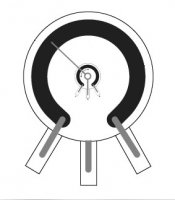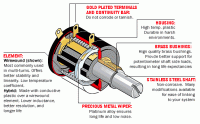Probably the video below can be used for comparison, it was made 3 weeks ago with the same camera gimbal and the GH2.
But there I was using the Picloc 3x pro and not the FC for stabilization!
Let me play a little bit devils advocate ;-)
To my opinion the weakest point of all the current camera gimbals is the cheap analog potentiometer used to determine the position of the camera.
I is so funny to see all this very expensive and nice camera gimbals but all of them duplicate the same mistakes.
Most have realized that camera gimbals did not work very good without additional gears.
So we add nice gears and we get very a powerful drive by increasing the torque of the servo but reducing the speed.
To compensate the first mistake we get the fastest DIGITAL servo we can find on the market and then we remove the internal potentiometer.
Now we introduce the next mistake, the potentiometer is mounted on the output axis and what is the result???
A LARGE Servo with external gear, very powerful but SLOW, and DECREASED PRECISION.
By the way the potentiometer is an analog device so forget the DIGITAL precision of the 'not so expensive' servo.
You can get extremely powerful and slow servos on the market and you would not need to modify them...
Let's get back to the potentiometer, as I said the weakes part of the expensive gimbal. In the picture below you see two potentiometers, a small one and a large one. What do you think, which of the two has better
precision and resolution when you mount it on the output axis of your gimbal?
View attachment 2828
So i hope you got the point, I did nothing else then replaced the tiny potentiometer by a larger one.
And I'm also convinced you can build as many controllers you want around this servo, it will not get better as long you are not fixing the cause of the problem.


